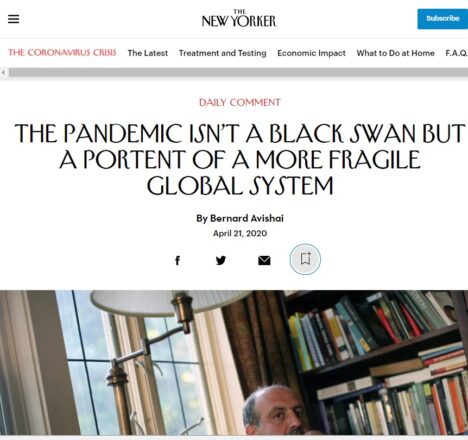This has truly been a year of continuous supply chain disruptions, and many businesses have felt the effects of the pandemic. While the threat of a worldwide pandemic has been on the shortlist of potential risks of business continuity professionals, not many of us thought we would ever experience what we did in 2020. Given these circumstances, and add to that a dash or two of Brexit, I realize now that I should have seized the opportunity long ago to reinstate this blog in the early months of 2020, not now, when it it is nearly over and all the lessons have been learned.

For all of us working in the field of risk management the Covid-19-pandemic did not come as a surprise, and it certainly wasn’t a Black Swan event. Nassim Nicholas Taleb had that one right, when the New Yorker interviewed him in April 2021.
Proliferating global networks, both physical and virtual, inevitably incorporate more fat-tail risks into a more interdependent and “fragile” system: not only risks such as pathogens but also computer viruses, or the hacking of information networks, or reckless budgetary management by financial institutions or state governments, or spectacular acts of terror. Any negative event along these lines can create a rolling, widening collapse—a true black swan—in the same way that the failure of a single transformer can collapse an electricity grid.
Fragility…a familiar term, and the core of Taleb’s message. I found that New Yorker article by chance this evening when searching the Internet for inspirational posts to start blogging again. And yes, I do feel inspred now. Maybe not so much by the article, but by Taleb himself. Looking back at what I wrote five years ago in Taleb, Hamel, Holling…and I, I know that I felt honoured to have been so prominently cited by him. I still do.
With that it is time to delve deeper into my the research idea and my then defintions of robustness, flexibility and resilience and explre how I have made use of it in my current work. That will be the topic of the coming blog posts.